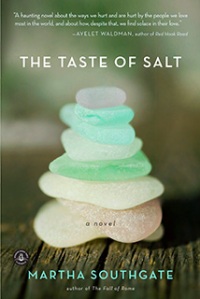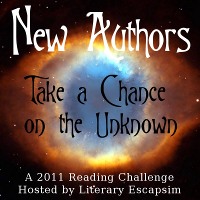
The narrative begins in Josie’s point of view and then shifts to that of her mother, her father, her brother, and her husband Daniel. Southgate is trying to tell a well-rounded story about heartbreak and disappointment, but readers may find the additional points of view unnecessary. Even without the other perspectives, Josie’s voice is solid enough to carry the entire story.
“Nothing had changed and everything had changed. I worked better than I had in months on my grant, suddenly inspired;” (Page 160)
Salt can build up and make the mouth water with its bitterness, but often the hunger for salt can take over. In this way, Southgate’s novel is about that hunger that comes when we search to fill an emptiness within us with the nearest object or pleasure (i.e. alcohol, drugs, sex). Josie’s brother and father are addicted to alcohol and/or drugs, but while Josie has become successful in her career and married an intelligent man, she’s looking to fill her own holes. Her addiction is different from that of her father and brother, but no less dangerous.
“Life weighs a ton. That’s why I love the water. Nothing weighs anything there.” (Page 7)
Southgate’s characters are multi-faceted and struggling. Josie has pushed her issues to the back, but they are still a weight around her neck, dragging her down. Tick knows he’s lost and continues to struggle for level ground, but their father has found redemption through the 12-step program and more. He hit rock bottom and lost it all. The story arc here is not surprising, and Josie doesn’t really lose her critical streak of other’s life decisions, even when she is choosing wrongly for herself. However, perhaps that’s one of the problems with addiction. Meanwhile, there seems to be a particular emphasis on race, but its connection to the addiction story line is not clearly drawn and leaves readers wondering what truths Southgate is trying to uncover. It almost feels as though race is a crutch being used by the main character to justify her actions, which is bothersome.
Through frank prose, Southgate dives deep into the psyche of addicts to explore the turmoil created and the pull of home even when you try to run from the past. The Taste of Salt is an exploration of the love and bitterness of addiction, how it tears families and individuals apart, and the depth of love that keeps families moving forward.
About the Author:
Martha Southgate is the author of four novels. Her newest, The Taste of Salt, is published by Algonquin Books. Her previous novel, Third Girl from the Left, won the Best Novel of the Year award from the Black Caucus of the American Library Association and was shortlisted for the PEN/Beyond Margins Award and the Hurston/Wright Legacy award. Her novel The Fall of Rome received the 2003 Alex Award from the American Library Association and was named one of the best novels of 2002 by Jonathan Yardley of the Washington Post. She is also the author of Another Way to Dance, which won the Coretta Scott King Genesis Award for Best First Novel. She received a 2002 New York Foundation for the Arts grant and has received fellowships from the MacDowell Colony, the Virginia Center for the Creative Arts and the Bread Loaf Writers Conference. Her July 2007 essay from the New York Times Book Review, “Writers Like Me” received considerable notice and appears in the anthology Best African-American Essays 2009. Previous non-fiction articles have appeared in The New York Times Magazine,O, Premiere, and Essence.
I originally read this for Book Club at Devourer of Books, with Linus’s Blanket.
This is my 70th book for the 2011 New Authors Reading Challenge.



 About the Author:
About the Author:
 About the Author:
About the Author:
 About the Editor:
About the Editor: About the Author:
About the Author:
 About the Author:
About the Author:









